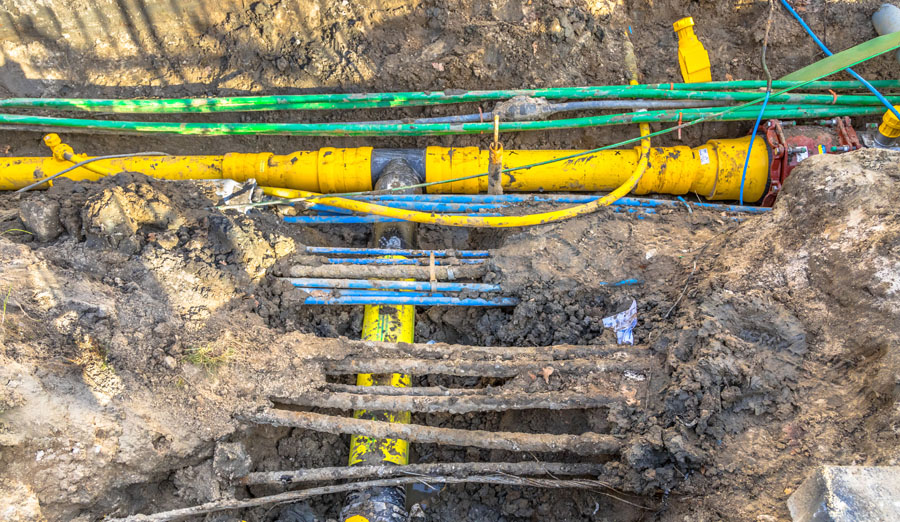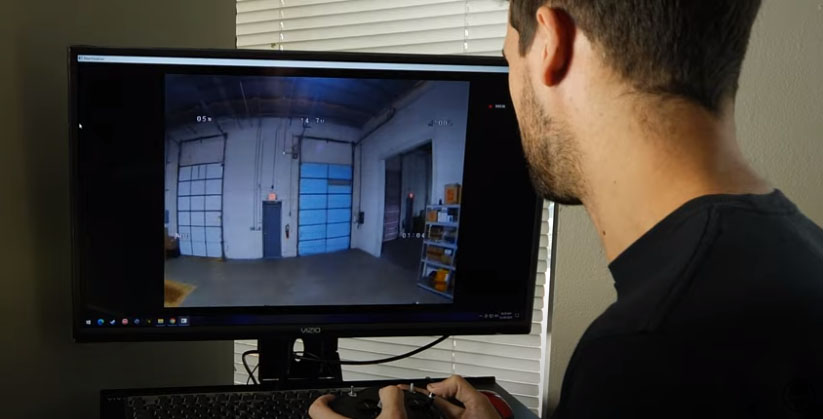FTE Networks Inc. (FTNW:NYSE.American) reported its earnings recently. The good news was that things appear to be right on track for hitting its guidance. Revenues of $85 million and adjusted EBITDA of $7.4 million are trending toward the official guidance of $350 million and $30 million respectively. This is all very positive.
The better news, and more important to the long-term story of FTE, was the commentary surrounding the company's CrossLayer business. CrossLayer is a brand new business. FTE launched it in November of 2017, there were zero revenues until Q1 of this year, and it recorded a minimal $200,000 in revenue in that quarter.
Do not let the small numbers out of the gate fool you. CrossLayer is set to be a huge business. And, based on what management said on the call, this ramp in business will happen starting right now and will continue for a long time to come.
"Speaking of progress, as mentioned earlier, we have been named as a technology provider for one the largest commercial real estate services and investment firms in the world. This is a significant achievement and we are honored to be among a few key service providers that will partner with the firm to provide advanced technology services to building owners and their tenants. It speaks volumes about the value of our CrossLayer solution." ~ Michael Palleschi, CEO
The above quote is from the FTE's earnings call on May 21, 2018. In that call the company discussed a recent deal that has yet to be formally publicized. This relationship with a very, very large commercial real estate partner will basically be the formal debut of CrossLayer. FTE is unveiling what has been a business concept and taking it to a national stage.
The market seems to have assigned minimal importance to this announcement, but allow me to try to explain why this is of incredible significance to FTE. I'll lay out the logic here:
- One of the world's largest real estate firms likely controls billions of square feet. Let's assume it has 1 billion square feet of space. At an average building size of 500,000 sq. feet, that represents 2,000 buildings.
- CrossLayer enables building owners to have an additional revenue stream, which increases the value of the buildings. It also enables smart buildings, which command more rent and can be cheaper to operate (think smart lighting, heat, etc.). Overall, it brings a value proposition, additional revenue driver, and increased value to the asset. One can easily assume a vast majority of office buildings will want to switch.
- FTE generates approximately, per the conference call, $400,000 per building. This is high marginó60% or moreóbusiness.
- There's no reason not to believe that CrossLayer can't be in 20% of these buildings over the next five years. Which would mean an incremental $160 million in annual, recurring revenue and over $100 million in incremental annualized EBITDA.
A top four firm manages more than 2,000 buildings...
Let's dig a little deeper into these points, starting with the space controlled by the largest property owners in the world. Here's a list of the top five.
Assuming that "one of the largest commercial real estate services and investment firms in the world" is one of the top four, we're talking 1 billion square feet being a very conservative number. Suffice to say that each of the top four manages well in excess of 2,000 buildings.
CrossLayer reduces costs and adds value of a building...
When property owners look at their buildings they evaluate them on a cap rate. For those who don't know, this is simply the ratio of Net Operating Income (NOI) to Property Value. On an apples to apples basis, similar properties will have similar cap rates.
By virtue of its revenue sharing agreement with landlords, FTE generates additional NOI for building owners. Which means that, if cap rates are constant, CrossLayer just increased the property value. I don't think this can be overemphasized...by allowing FTE to install CrossLayer, owners see an immediate increase in property value.
This increase is based on additional revenue generated from CrossLayer as the company signs up and bills the tenants for connection services. There are also savings that can be generated by having a smart building. These savings are obtained from using technology in ways such as smart lighting and smart heating. Similar to the CrossLayer revenue increasing NOI, savings on building operating expenses result in a corresponding increase in NOI. Again, CrossLayer's installation provides an opportunity for further increasing property values.
Typically, turning a building into a smart workplace is an expense item for a property owner. This is where the value proposition of CrossLayer helps owners. By building out the network themselves, CrossLayer assumes the expense of making a smart building. This can result in savings to a building owner of several hundred thousand dollars, money owners would have spent to generate the savings of being a smart building.
The final add of the CrossLayer offering is the cache that comes with being a smart building. Look at WeWork as an example of a company that touts the futuristic workplace. CrossLayer enables any building to compete with a WeWork on the technology side. This certainly will provide for happier tenants and the opportunity to increase rents relative to other, older offices.
Thus, for all these reasons, CrossLayer is of tremendous value to building owners. There is no reason to think that FTE will be restricted in the percentage of buildings it is engaged to connect; instead, it makes sense for landlords to try to roll them out as quickly and broadly as possible.
How to value CrossLayer?
FTE is guiding for CrossLayer in 30 buildings this year, which is a number I think it'll easily beat. But, just based on this number, CrossLayer can add $12 million in run-rate revenue at year-end. This would equate to over $7.5 million in additional run-rate EBITDA. With a big ramp in front of them, one could easily put a 20X multiple on EBITDA right now, suggesting that CrossLayer alone is worth over $20 per share.
I would suggest that this is just the tip of the iceberg and CrossLayer will be on an eventual march to well over the $160 million in EBITDA I detailed above. It should sign more contracts and could easily exceed 1,000 buildings on net over the next three to five years. But, sticking to the $160 million number for five years from now, CrossLayer at that time might be worth 10X EBITDA? Seems reasonable for a fast growing, high-margin business. That would make it a $230 stock in five years on CrossLayer alone.
The truth is, we're still in the early innings for CrossLayer and there is a lot to prove. However, I am in the camp that the business is worth a whole lot more than is baked in the current price just based on this year's EBITDA rate. The stock can easily move a lot higher now, still leaving plenty of upside if the company can manage to pull off the big picture and grow into its multi-billion potential.
The investment community missed the big news on the earnings call. When FTE's partner, one of the world's largest real estate firms, comes out with a press release in the next couple of weeks, it should be eye-opening to the markets. For now, we get to buy the shares before the street catches on.
Daniel Carlson is the founder and managing member of Tailwinds Research Group and its parent company DFC Advisory Services, which is a licensed registered investment advisor (CRD # 297209). Tailwinds is a microcap focused research company that provides research on and consults to over 20 emerging growth companies in the technology and life sciences arenas. DFC Advisory Services is an RIA that manages money dedicated to investing in the companies covered by Tailwinds. For more information on these two companies and their track record, please see www.tailwindsresearch.com. Prior to founding these two entities, Dan spent many years working with small public companies, having been CFO of two public companies and helping finance many others. A 1989 graduate from Tufts University with a degree in Economics, Danís formative years in business were spent as an equity trader, first on the Pacific Coast Stock Exchange then on the buyside at several multi-billion dollar firms.
This article was submitted by Tailwinds Research. For more information on Tailwinds Research or on FTE Networks Inc, please visit www.tailwindsresearch.com.
Tailwinds is engaged by FTE Networks Inc. and owns stock in the company. For a complete list of disclosures, please click here.
[NLINSERT] †Disclosure:
1) Daniel Carlson: I, or members of my immediate household or family, own shares of the following companies mentioned in this article: FTE Networks. I personally am, or members of my immediate household or family are, paid by the following companies mentioned in this article: None. My company has a financial relationship with the following companies referred to in this article: FTE Networks. Additional disclosures and disclaimers are above. I determined which companies would be included in this article based on my research and understanding of the sector.
2) The following companies mentioned in this article are billboard sponsors of Streetwise Reports: None. Click here for important disclosures about sponsor fees. The information provided above is for informational purposes only and is not a recommendation to buy or sell any security.
3) Statements and opinions expressed are the opinions of the author and not of Streetwise Reports or its officers. The author is wholly responsible for the validity of the statements. The author was not paid by Streetwise Reports for this article. Streetwise Reports was not paid by the author to publish or syndicate this article. Streetwise Reports requires contributing authors to disclose any shareholdings in, or economic relationships with, companies that they write about. Streetwise Reports relies upon the authors to accurately provide this information and Streetwise Reports has no means of verifying its accuracy.
4) This article does not constitute investment advice. Each reader is encouraged to consult with his or her individual financial professional and any action a reader takes as a result of information presented here is his or her own responsibility. By opening this page, each reader accepts and agrees to Streetwise Reports' terms of use and full legal disclaimer. This article is not a solicitation for investment. Streetwise Reports does not render general or specific investment advice and the information on Streetwise Reports should not be considered a recommendation to buy or sell any security. Streetwise Reports does not endorse or recommend the business, products, services or securities of any company mentioned on Streetwise Reports.
5) From time to time, Streetwise Reports LLC and its directors, officers, employees or members of their families, as well as persons interviewed for articles and interviews on the site, may have a long or short position in securities mentioned. Directors, officers, employees or members of their immediate families are prohibited from making purchases and/or sales of those securities in the open market or otherwise from the time of the interview or the decision to write an article, until one week after the publication of the interview or article.




























































